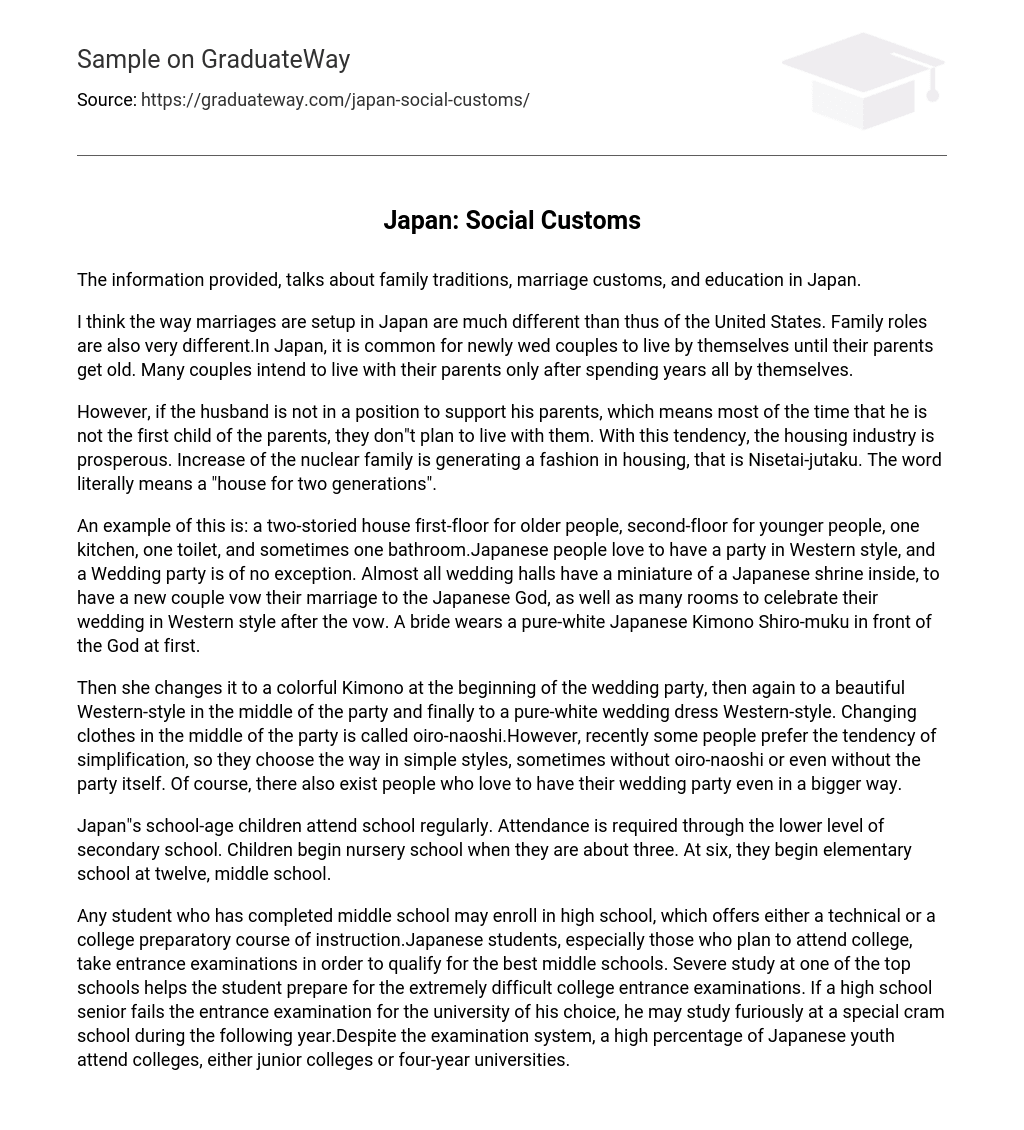The text centers around the customs and traditions related to family, marriage, and education in Japan.
Marriage structures in Japan vary greatly from those in the United States, including family roles. In Japan, it is traditional for newlyweds to live separately until their parents become elderly, often only moving in with them after a few years of living independently.
However, if the husband cannot financially support his parents (usually due to not being the eldest child), they do not plan on living with him. This has led to a flourishing housing industry. The increasing number of nuclear families has given rise to a housing trend called Nisetai-jutaku, which means “house for two generations” in English.
An illustration of this concept is a house with two stories. The first floor is designed for older individuals while the second floor caters to younger individuals. This house typically includes one kitchen, one toilet, and sometimes one bathroom. Japanese people enjoy hosting Western-style parties, and weddings are no exception. Most wedding venues feature a miniature Japanese shrine where newlyweds can pledge their marriage to the Japanese God. After the ceremony, there are multiple rooms available for celebrating the wedding in Western style. The bride often wears a pure-white Japanese Kimono known as Shiro-muku during the ceremony in front of the God.
During the wedding party, she transitions through several outfits. She begins with a vibrant Kimono and later dons a stunning Western-style attire. Finally, she transforms into a pure-white Western-style wedding dress. This act of changing clothes during the party is known as oiro-naoshi. However, nowadays some people prefer simpler styles and may choose to forgo oiro-naoshi or even the entire party. Nevertheless, there are still individuals who take pleasure in celebrating their weddings in a more lavish manner.
In Japan, children of school age are obligated to attend school consistently starting from primary up to lower secondary school. Usually, they commence attending nursery school at approximately three years old and proceed with their education in elementary school until they reach twelve years of age.
High school enrollment is available to all middle school graduates. There are two options: technical and college preparatory tracks. In Japan, students who wish to attend college often take entrance exams for prestigious middle schools. These schools offer a rigorous education that helps prepare students for the demanding college entrance exams. If a high school senior fails their desired university’s entrance exam, they can spend the following year studying intensively at a specialized cram school. Despite this examination system, many Japanese young people pursue higher education at junior colleges or four-year universities.





